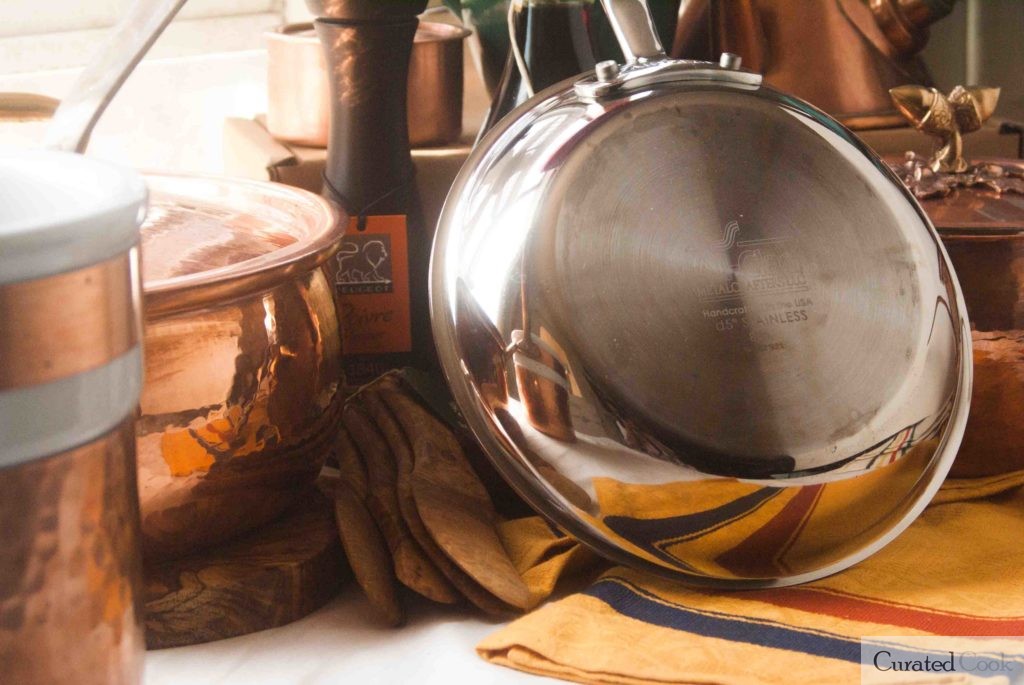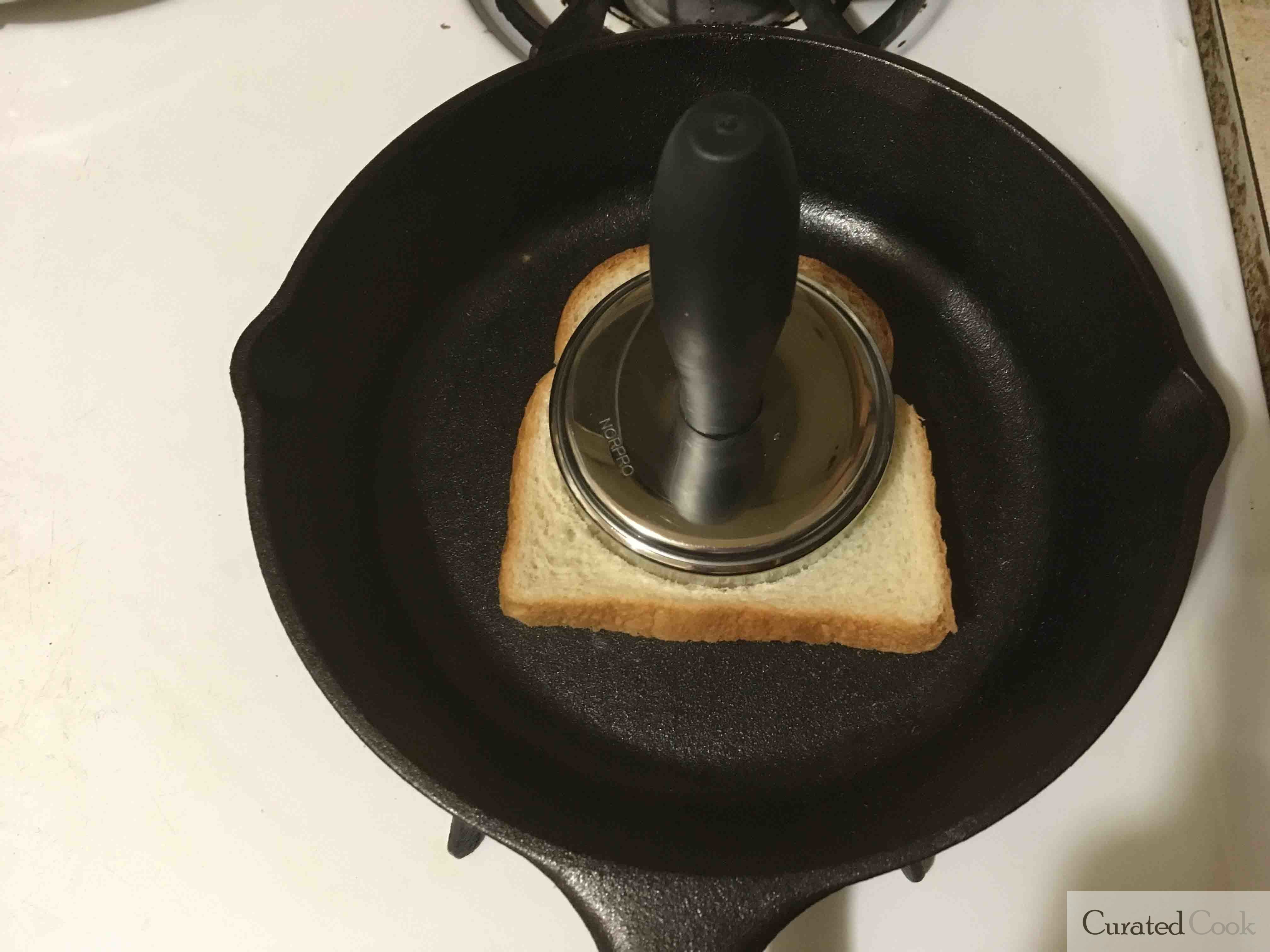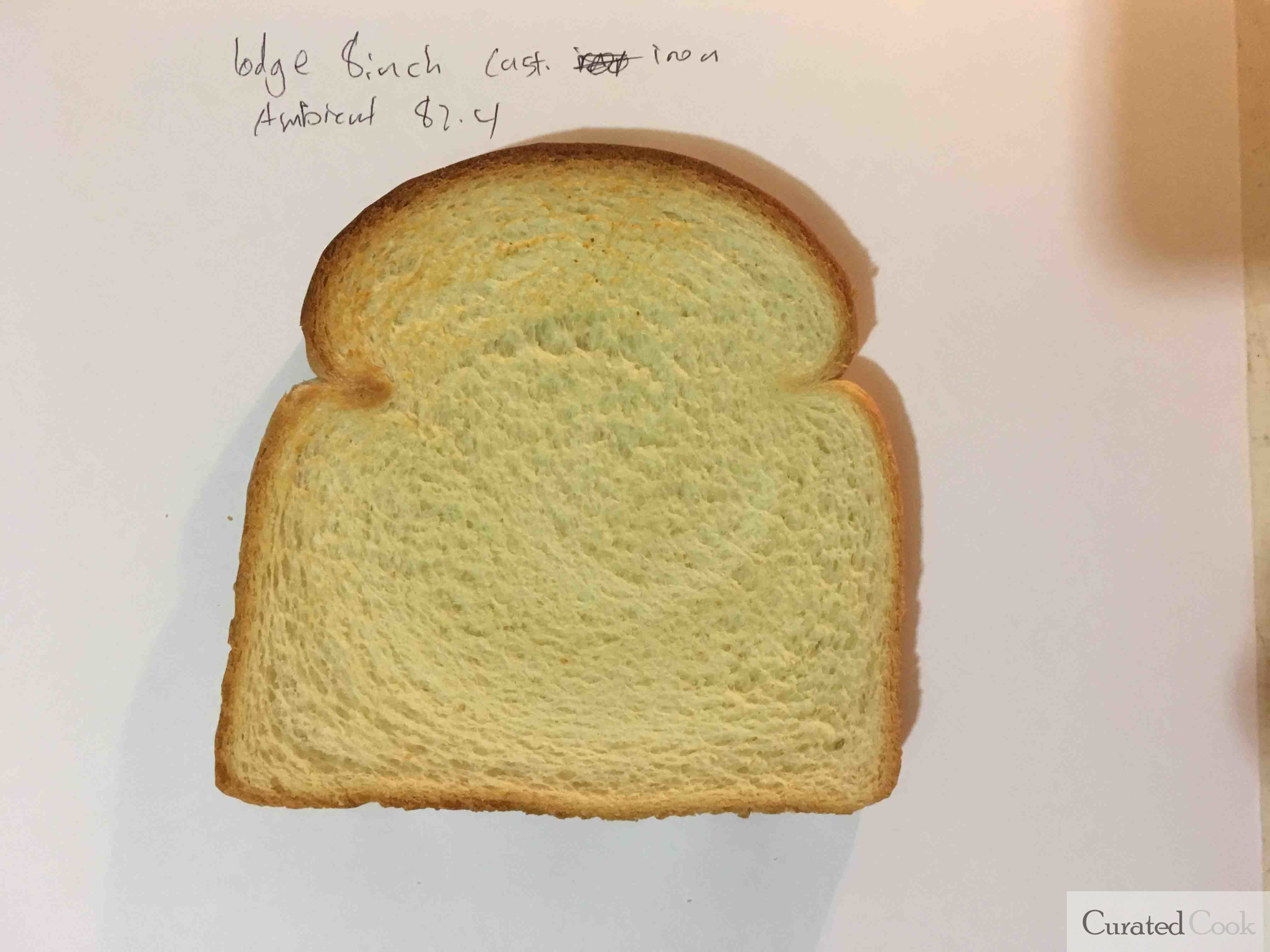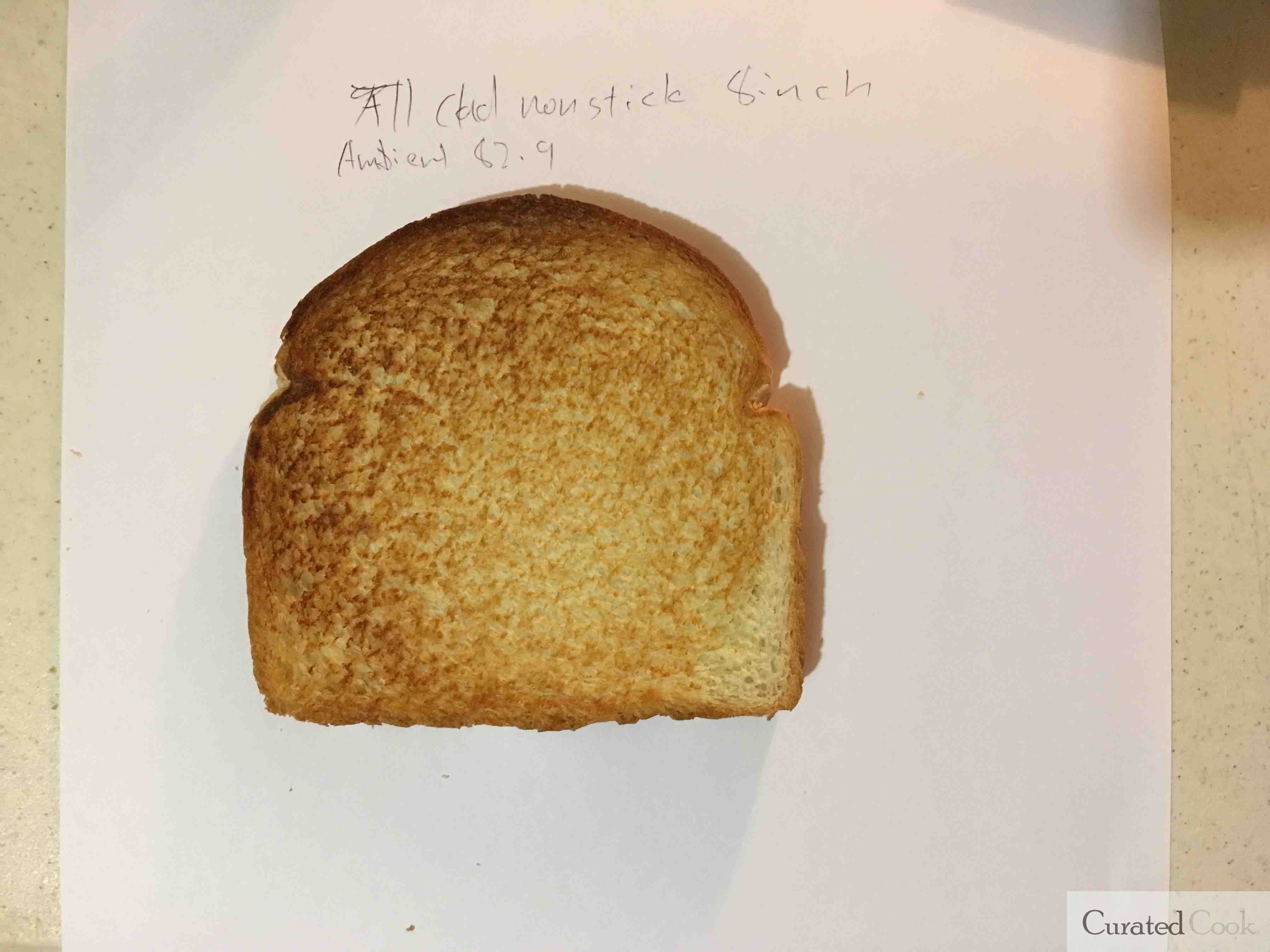Making purchases at Amazon.com and other website funds this website by generating revenue. Any help is appreciated and supports both me and content like this.
Cast Iron vs Stainless Steel Cookware

What most people don’t know is that cast iron has been used in cookware for literally hundreds of year. Martensitic Stainless Steel, was discovered in 1912 by Elwood Haynes, a metallurgist and inventor. The implementation of Stainless Steel into cookware is even shorter. Given the advancement of technology and science, some would wonder, Cast Iron vs Stainless Steel Cookware, what is better. Both type of metal have their own positive and negative traits.
But what most people don’t know is that both metals are actually poor conductor of heat. To get around this cookware manufacturer would sandwich a piece of aluminum or copper to improve the performance of the metal. For Cast Iron, they made it incredibly thick so that it can store a lot of heat. This article will look at a comparison of the metal properties and how it affect cookware. Which Manufacturer are pioneers and which one is superior.
Heat Conductivity
Heat Conductivity is the amount of energy that is transferred from a heat source. As stated before, both type of metal has very poor heat conductivity. With Cast Iron being 52 (W/m K) and stainless steel coming in at 14.4 (W/m K). Per this number, it seems like cast iron is a lot better. However if you compare this with copper, you can see that it has a heat conductivity of 413 (W/m K). Given as such, you can see that both Cast Iron and Stainless Steel are very bad Thermal Conductor. To get around this Manufacture will often combine the metal with other more conductive metal like Aluminum and Copper. All Clad did this with their cookware and they are now known as one of the top manufacturer of cookware in the USA.
Another way manufacturer try to smooth out the thermal conductivity issue is by increasing the thickness of the metal. On average, when I measure cast iron cookware from Major Manufacturer like Lodge and Le Creuset, I find that they hover around 3.78 mm. However, in my experience this only work marginally well. The only real benefit that I see from making it thicker is the amount of heat stored into the pan.
Test Results of Thermal Conductivity
To prove this, I got two 8 inch pans. one from Lodge and one from All Clad. They are both 8 inch pans and I heat them both up on the same burner for 2 minutes. A metal pounder held down the toast to smooth out any unevenness. Below you will see a picture on how the test was performed.

This is the result from Lodge Cast Iron Skillet. After 2 minutes, the toast was barely browned at all. I have other test result that also showed, when give enough time, the heat distribution was still poor.

Now here is a similar test done to All Clad 8 inch pan. This particular model was the d5 version and it conducted significantly more heat than the cast iron one. Although the heat distribution was not perfect, it still performed really well. Especially in comparison to the Cast Iron Pan.

Although stainless steel is a poor conductor of heat, they get around the limitation by making it as thin as possile. They are relying on the properties of metal such as aluminum and stainless steel to carry the brunt of the heat transfer.
Does this mean that you should toss out your cast iron pan? No, not really, both pans have their own special characteristic that makes them unique. Once such this is the non stick ability.
Cast Iron vs Stainless Steel Non Stick
Both metal will stick unless it is processed further. For cast iron, they need the “Seasoning” and stainless steel need either a non stick coating or proper heat control.
Cast Iron Seasoning
Cast Iron Seasoning is the polymerization of fat onto the cookware. The layer of fat that is baked onto the metal is what is more popularly known as seasoning. I think if most people realized that it is really just baked on fat, people will be more adverse in purchasing cast iron cookware. However, there is no ill effect on your health cooking on the pan. Overtime, cast iron pan will gradually build up more seasoning and its nonstick seasoning will increase. If you somehow over heat or wash off the seasoning, you would have to reseason pan. That is one of the reason why some avid collector of cast iron get so mad if you “Wash” their pan.
Stainless Steel Food Sticking
Stainless steel main issue, aside from its heat conductivity is the fact that almost everything sticks. Good luck trying to make stirfy noodles on a stainless steel lined pan. To get around this, some manufacturer will line the cookware in teflon. However, the teflon coating will deteriorate overtime and you need to toss it.
There are ways to cook in stainless steel without making food stick. I constantly fry scrambled eggs in a stainless steel pan. All I need to do is heat up the pan fully then add oil. I would have issue doing this in a cold pan. Other methods will be to sear food properly and wait for it to release naturally. It requires a little more technique than cast iron.
Cast Iron vs Stainless Steel Cleaning
This is something that is very big for American Consumer. I grew up washing my dishes by hand and never used a dish washer. Most cookware from All Clad are dishwasher safe. Its stainless steel cladding prevents rust from corroding the metal. However, cast iron is notorious for rusting. Once you strip its seasoning, rust will start to form if you do not try it properly.
Cast Iron Proper Cleaning
In order to maintain the seasoning of cast iron, you cannot use soap or you run the risk of stripping the seasoning. To clean it, what you can do is dump salt into the pan and run a paper towel through it to strip the caked on food. Other ways of doing this is to use a gentle metal scrubber. You can typically find it on amazon for a couple of dollars. One thing that I do find annoying is that there is always a black streak on the towel even after I “Cleaned” the pan.
Stainless Steel Cleaning
Cleaning on stainless steel pan are much easier. You can either wash it in the dish washer or you can wash it by hand. You can use soap on these pan as well, so there is no fear of bacteria festering on your pan.
Cast Iron vs Stainless Steel Searing Capabilities
Both cookware can sear food beautifully with the edge given to stainless steel due to its cladding. By itself, it is worse than cast iron.
Cast Iron Searing
The reason why cast iron is so loved is simply due to its weight. Because of the thickness of these pans, it can store a lot of food without losing too much heat. This means that food wont steam as readily when you drop cold food in.
Stainless Steel Searing
Stainless Steel are usually lighter and wont sear as well as cast iron. However, manufacturer make thicker lines of cookware like the D5 and the D7 for this specific issue. They increase the layer and the weight of these cookware so that you can sear just as well as cast iron.
Cast Iron vs Stainless Steel Price
Price is a major factor to consider here. Lodge is one of the best value cookware that you can buy. You can typically find their skillets for less than 20 dollars. While manufacturer like All Clad will charge at least 100 dollar for a skillet. In this instance, it makes complete sense why people love cast iron so much. However, once you get into the higher end cast iron cookware, they start costing 2-300 dollar. That makes no sense for such a old technology. You will get better performance from a pan by All Clad.
In fact, I even did a comparison between high end cast iron manufacturer like Le Creuset and Lodge. I found that the Lodge actually outperformed Le Creuset in my Toast Test.
Which One should you buy?
If you only have 20 dollar, cast iron will work best for you. It will sear beautifully and will do most if not all your cooking need. However, the fully cladded pans by All Clad will outperform Lodge any day. Except for the non stick portion. I personally have both so I use the pans for different purpose. If I want to sear a large batch of food, I use the lodge skillet simply because I dont care if I break it. I would care if I broke my All Clad pan, simply because its expensive.
I hope you find my article on Cast Iron vs Stainless Steel cookware to be helpful, please visit the Article page for more!
Cast Iron vs Stainless Steel Article Sources
Engineering Tool Box
https://www.engineeringtoolbox.com/thermal-conductivity-metals-d_858.html
Wikipedia Thermal Conductivity
https://en.wikipedia.org/wiki/Thermal_conductivity

Steve
August 4, 2022 at 6:50 amThis article is filled with uninformed opinions and erroneous conclusions. Common stainless pans are certainly made of Austenitic and NOT Martensitic Stainless Steel. The seasoning layer is NOT fat after it’s polymerized; it’s closer to a plastic polymer. So, “I think if most people realized that it is really just baked on fat, …”, this premise is FALSE. It’s not ‘baked on fat’ at all. It’s chemically quite distinct.
The statement, “… you cannot use soap or you run the risk of stripping the seasoning …”, is also false. The polymer is hydroscopic,and will adsorb water and soften if soaked for an extended period (reversibly). It is perfectly practical to briefly hand wash the pan with soap & water and a soft cloth or sponge, then immediately dry it by heating. Acids, including those in some foods, will break apart the polymer and destroy the ‘seasoning’, which is a greater harm to seasoning than soap and water.
Steve
August 4, 2022 at 7:59 amThe thermal comments also need revision. The ‘toast test’ is not a meaningful measure of thermal conductivity. Heat conduction through a pan bottom increases with bulk thermal conductivity, and decreases inversely with pan thickness. The thickness of cast iron pans is due to the very brittle nature, low-tensile strength of high silicon iron. Cast iron pans can crack & shatter. Stainless and carbon steel are far less brittle, more malleable and can be made far thinner.
One popular brand of cast iron pans are 5mm thick, while a top all-clad brand has 0.8mm of stainless (Austenitic 18/10) and 0.9mm of copper. The two I mention have the same conductivity w/in 5%. The all-clad would have better conductivity into the pan if they eliminated the copper layer!! A 0.8mm stainless pan would be superior in that sense. The reason they include the copper (or aluminum) in clad stainless is to spread the heat HORIZONTALLY. Stainless is such a poor conductor that you’d get hot vs cold spots across the pan.
Bottom-line – carbon steel pans are superior. They have very similar thermal conductivity as cast iron, but sufficient tensile strength so as to make then only slightly thicker than stainless pans.